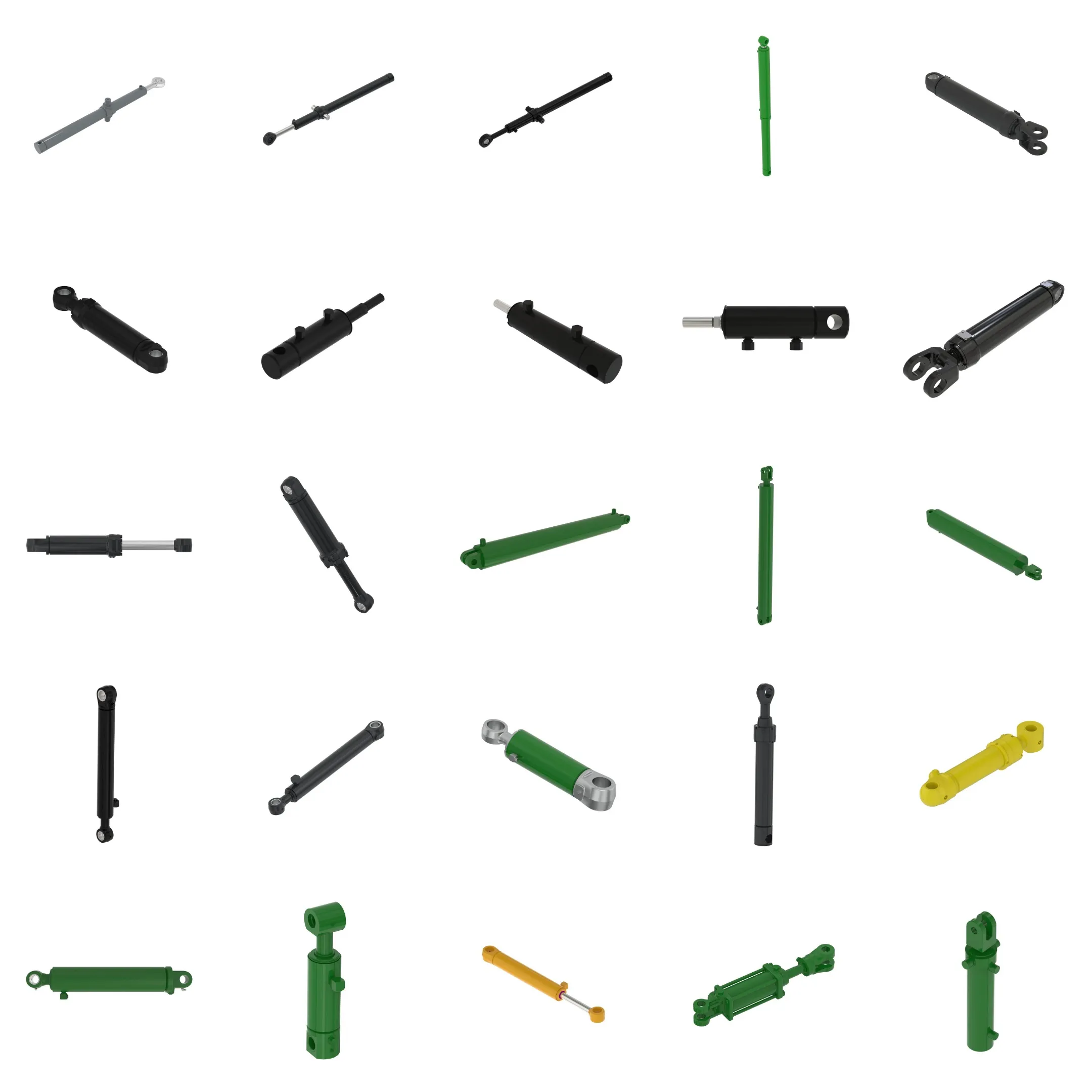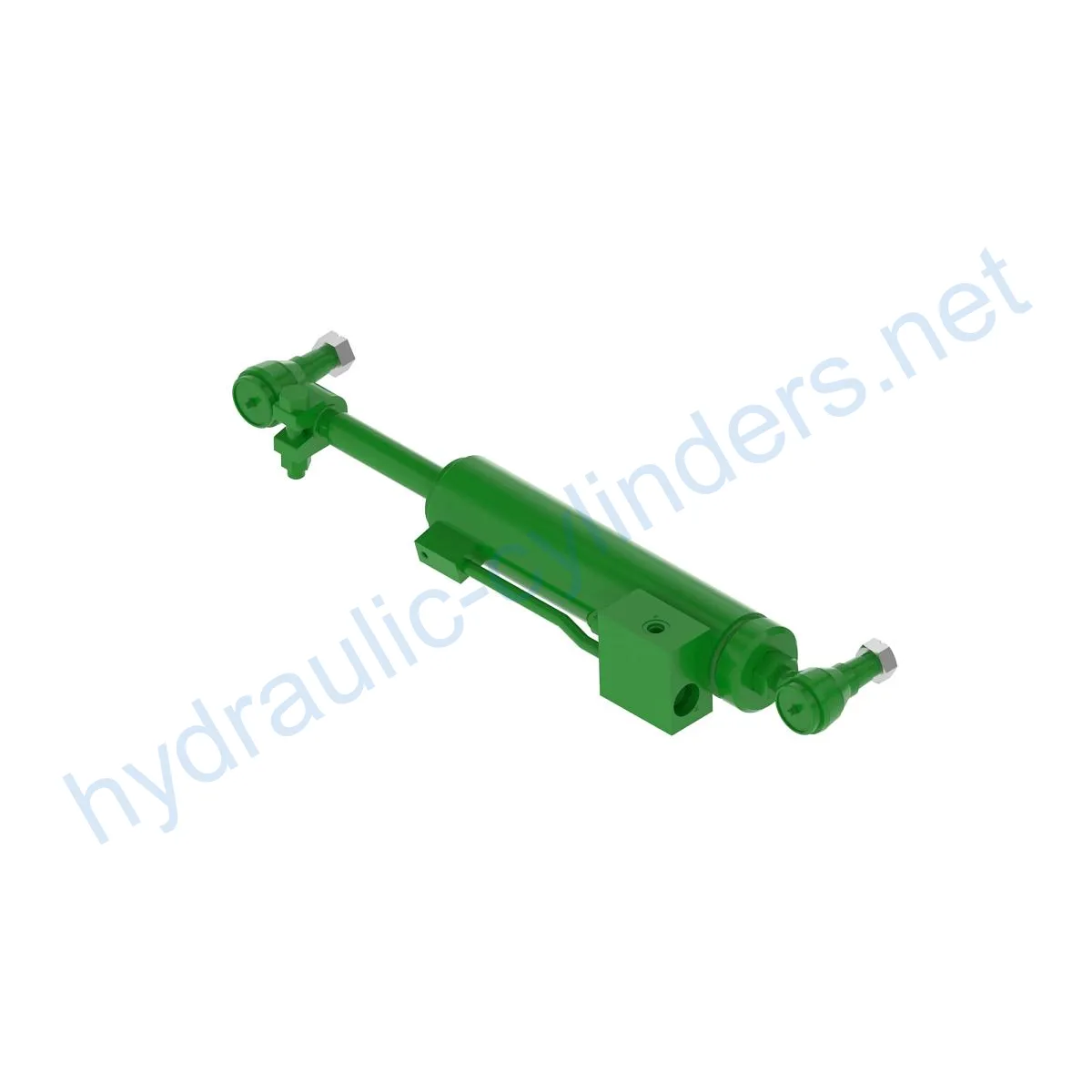Replacement Of AN302049 Steering Hydraulic Cylinder, LH
Mint a hidraulikus hengerek egyik gyártója, szállítója és exportőre a mechanikai termékek, kínálunk hidraulikus hengerek és sok más termék.
Kérjük, lépjen kapcsolatba velünk a részletekért.
Posta:sales@hydraulic-cylinders.net
Hidraulikus hengerek gyártója, szállítója és exportőre.
Replacement Of AN302049 Steering Hydraulic Cylinder, LH
Introduction
The Replacement Of AN302049 Steering Hydraulic Cylinder, LH is a hydraulic cylinder designed to replace the original cylinder in compatible machinery models 4920 and 4930. It is a crucial component that plays a key role in the steering system of these machines, allowing for precise control and maneuverability.
Specifications
- Weight: 34.04 lb
- Height: 4 in
- Width: 7 in
- Length: 23.75 in
Features
- Improved Equipment Performance: Replacing damaged or worn hydraulic cylinders can restore the normal operation capability of the equipment, ensuring its performance in various applications.
- Enhanced Safety: Regularly replacing hydraulic cylinders can reduce safety hazards caused by cylinder failures, ensuring the safety of operators and equipment.
- Overload Protection: New cylinder designs often incorporate better overload protection mechanisms, enhancing safety.
- Quick Installation: Modern hydraulic cylinders are designed for easy installation and replacement, minimizing downtime.
- Standardized Components: Many hydraulic cylinders are standardized products, making it easy to obtain replacement parts in the market.
Applications
- Excavators: Hydraulic cylinders in excavator arms or buckets may get damaged due to prolonged use or overload, requiring replacement to restore normal operation.
- Cranes: Hydraulic cylinders in crane boom arms are susceptible to wear and tear from frequent lifting and lowering, necessitating regular replacement for safety.
- Tractors: Hydraulic cylinders in front-end loader attachments of tractors may experience leaks or decreased performance during continuous lifting and tilting operations, requiring replacement.
- Harvesters: The hydraulic system endures high pressure during the harvesting process, and cylinders may get damaged due to fatigue, requiring timely replacement to maintain efficiency.
- Automated Production Lines: Hydraulic cylinders are used to control robotic arms and other automated equipment. Cylinder failure can significantly impact production efficiency and should be replaced immediately.
- Die Casting Machines: Hydraulic cylinders in die casting machines may experience decreased performance under high pressure and temperature environments. Regular replacement ensures product quality.
- Mining Equipment: Hydraulic cylinders are used for lifting and moving heavy loads in mining equipment. Due to harsh working conditions, regular inspection and replacement are necessary to avoid equipment failures.
- Bulldozers: Wear of hydraulic cylinders in bulldozer blades can lead to a decrease in pushing power, requiring timely replacement to maintain operational efficiency.
Maintenance Tasks
- Regular Inspection: Perform routine checks to identify any signs of wear or damage in the hydraulic cylinder.
- Proper Lubrication: Ensure appropriate lubrication of the cylinder to reduce friction and prolong its lifespan.
- Seal Replacement and Calibration Checks: Regularly replace worn seals and perform calibration checks to maintain optimal performance.
Safety Considerations and Environmental Factors
When using hydraulic cylinders, it is important to follow safety measures to prevent accidents and ensure the well-being of operators and equipment. Proper handling and maintenance of cylinders can also minimize environmental impact.
Troubleshooting and Common Issues
- Loss of Hydraulic Pressure: If the cylinder fails to exert sufficient force, it may indicate a loss of hydraulic pressure. Check for leaks or blockages in the hydraulic system.
- Slow or Jerky Cylinder Movement: This issue can be caused by insufficient lubrication or worn seals. Ensure proper lubrication and replace worn seals as needed.
- Excessive Noise or Vibration: Unusual noise or vibration during cylinder operation may indicate a mechanical problem. Inspect the cylinder for misalignment or damaged components.
- Leaking Fluid: Fluid leaks can result from damaged seals or connections. Identify the source of the leak and replace the faulty parts.
Preventive Measures and Troubleshooting Tips
To effectively diagnose and solve problems related to hydraulic cylinders, consider the following tips:
- Regularly inspect and maintain the hydraulic cylinder to identify potential issues before they escalate.
- Follow recommended installation, lubrication, and adjustment procedures to ensure proper functioning.
- Provide guidance on aligning the cylinder correctly during installation and recommend the use of appropriate installation brackets for stability.
- Offer inspection, repair, and replacement services to prolong the lifespan of the hydraulic cylinder.
- Share techniques to improve the durability of the cylinder and maximize its usage.

Design Considerations and Selection Criteria
When choosing a hydraulic cylinder, various factors should be considered, such as load-bearing capacity, sealing capabilities, durability, safety features, and ease of maintenance. Each aspect plays a crucial role in ensuring optimal performance and longevity.
Sealing and Lubrication
Hydraulic cylinders are equipped with various seals, such as piston seals and rod seals, made from wear-resistant materials like polyurethane and nitrile rubber. The cylinder body and threaded ends undergo precise surface treatments to enhance wear resistance. Regular lubrication with the appropriate hydraulic oil is essential for smooth operation and longevity.
Regular Inspection and Preventive Maintenance
- Proper installation, lubrication, and adjustment are vital for the optimal performance of hydraulic cylinders.
- During installation, provide guidance on aligning the cylinder correctly and recommend the use of suitable installation brackets to secure the cylinder.
- Recommend inspection, repair, and replacement procedures to ensure the longevity of the hydraulic cylinder.
- Offer tips and techniques to increase the lifespan of the cylinder and minimize potential issues.
Installation Guide
Follow these steps for a correct installation of the Replacement Of AN302049 Steering Hydraulic Cylinder, LH:
- Prepare the mounting area and ensure it is clean and free from debris.
- Align the cylinder with the mounting holes and attach it securely using appropriate bolts and fasteners.
- Ensure the cylinder is properly aligned and positioned for optimal performance.
- Connect the hydraulic hoses or lines to the cylinder, following the manufacturer’s guidelines for proper connections.
- Test the cylinder for proper operation and make any necessary adjustments.

Take a Tour of Our VR Factory:
Take a tour of our VR factory with the following
Hydraulic Cylinder Application:


